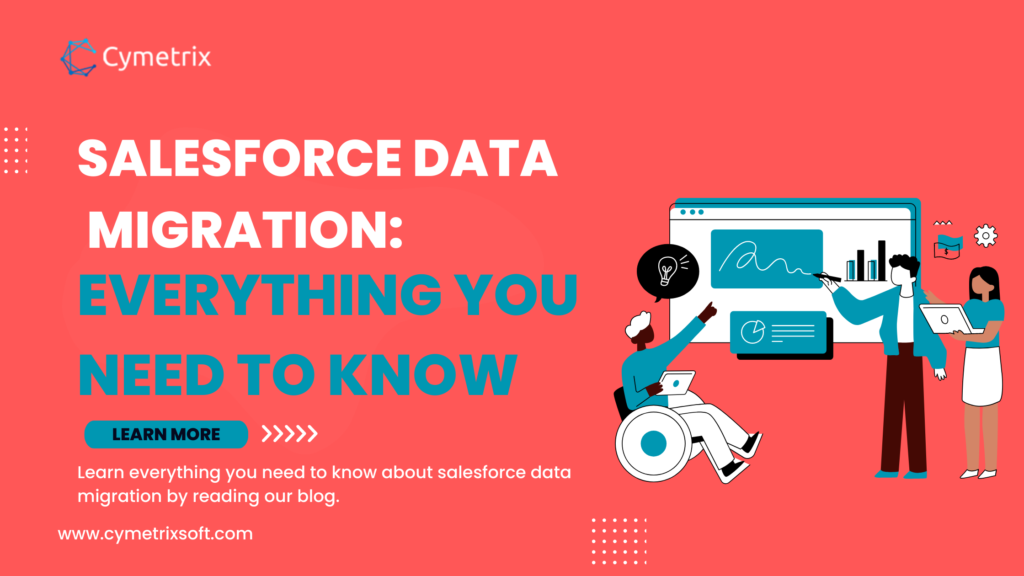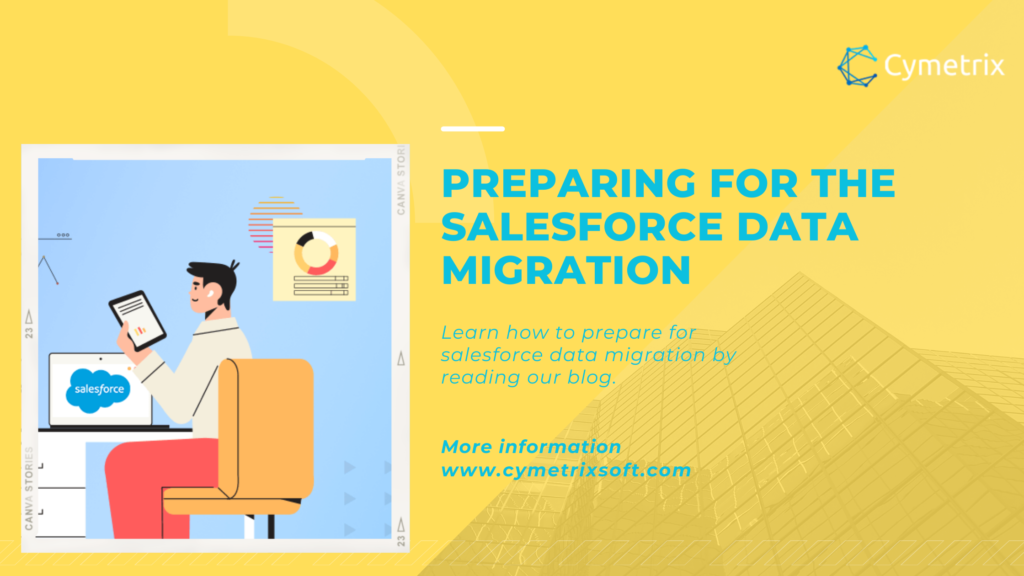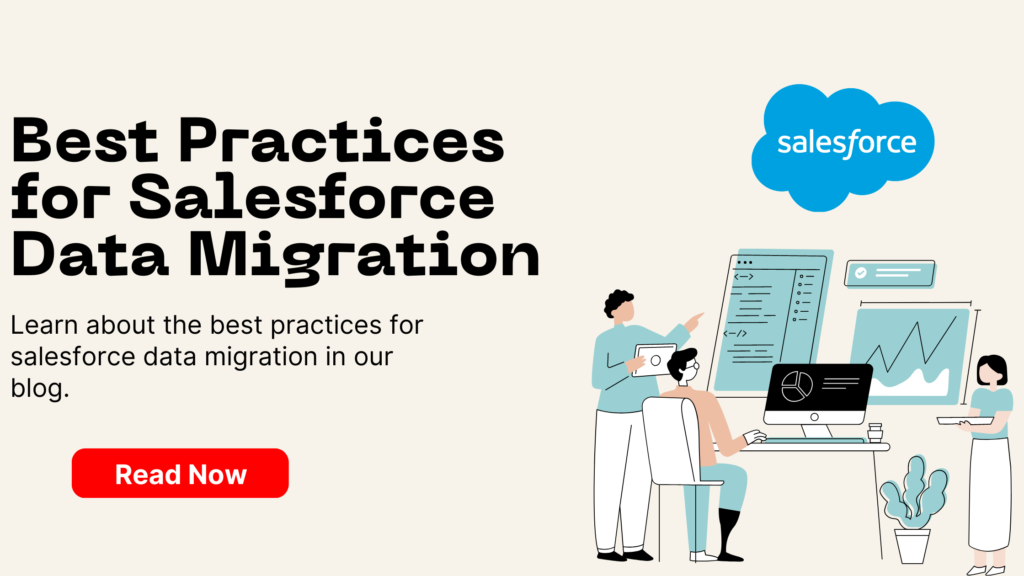
Introduction
Salesforce is one of the world’s most well-known and renowned customer relationship management (CRM) solutions. It helps organizations of all sizes manage their customer relationships, sales processes, and business operations more efficiently. However, when it comes to transitioning to Salesforce from another system or migration of data within Salesforce, many businesses encounter challenges. According to Dataversity, more than 80% of data migration projects run over time or over budget. Moreover, their cost overruns by an average of 30%, whereas time by 41%.
That is why understanding the process of data migration is crucial for businesses to ensure a smooth transition to Salesforce. In this article, we’ll dive into everything you need to know about Salesforce data migration, including planning, preparation, execution, best practices, and more.
Planning the Salesforce Data Migration
Before beginning the Salesforce data migration process, it is crucial to have a clear and defined plan. The are some considerations for planning a successful Salesforce data migration:
Determine the scope of the data migration
The first step in planning a Salesforce data transfer is determining which data to migrate. That involves evaluating which objects and fields are required, how much data must be moved, and the level of data complexity. This information will help estimate the resources and time needed for the migration.
Identify the data sources and destinations
The next step is to identify the data sources and destinations. That includes identifying where the data is currently stored, such as in spreadsheets, databases, or other CRM systems, and where it needs to be migrated to in Salesforce.
Assess the quality of the data to be migrated
The quality of the data to be migrated is critical to the success of the migration. It is essential to assess the data quality by checking for duplicates, inconsistencies, and errors. That will help determine any potential issues that may arise during the migration and develop a plan to address them.
Define the migration strategy
Finally, it is crucial to define the migration strategy. It includes determining the order in which the data will be migrated, deciding whether to perform a full or partial migration, and choosing the tools and methods that will be used for the migration. It is essential to consider the impact on business operations and ensure that the migration does not disrupt day-to-day activities.
By carefully planning the Salesforce data migration, businesses can ensure a smooth transition and minimize the risk of data loss or errors. In the next section, we will discuss the preparation phase of the migration process.

Preparing for the Salesforce Data Migration
After planning the Salesforce data migration, the next step is to prepare for the migration. These are some primary steps to follow during the preparation phase:
Setting up the Salesforce environment
Before the data can be migrated, the Salesforce environment must be set up. That includes creating the necessary custom objects, fields, and workflows, and configuring the security settings. Ensure proper setup of the Salesforce environment to ensure a smooth migration.
BPreparing the data for migration
Once the Salesforce environment is set up, the next step is to prepare the data for migration. It includes cleaning the data by removing duplicates and inconsistencies, and ensuring that the data is in a format that can be easily migrated to Salesforce. For example, data may need to be reformatted or converted into a specific file type before it can be migrated.
Establishing data mappings and transformations
Data mappings and transformations guarantee that the data is correctly and accurately migrated. That involves mapping the fields in the source data to their corresponding fields in Salesforce and transforming the data to fit the format required by Salesforce. For instance, if the source data has a phone number field, it may require transformation to match the specific format utilized in Salesforce.
Developing the data migration plan
Finally, it is essential to develop a detailed migration plan. That includes determining the migration sequence, deciding on the frequency of data migration, and setting up a testing plan to ensure that the migration is successful. It is crucial to define roles and responsibilities and establish a communication plan to keep all stakeholders informed during the migration process.
According to a survey conducted by Salesforce, companies that plan their data migration and set clear goals are more likely to have a successful migration. For example, companies that plan their data migration using a comprehensive data migration tool are twice as likely to have a successful migration than those that do not. By following these steps and preparing for the Salesforce data migration, businesses can ensure a successful and seamless transition to Salesforce.
Executing the Salesforce Data Migration
After planning and preparing for the Salesforce data migration, it is time to execute the migration. Here are some primary considerations for a successful migration execution:
Choosing the right migration tool
To begin with, one of the most crucial factors for a successful migration is choosing the right tool. There are several migration tools available, including Salesforce’s own Data Loader and third-party tools such as Jitterbit and MuleSoft. It is necessary to choose a tool that fits the specific needs of the organization and supports the data sources and destinations used.
Testing the data migration
Before executing the migration, it is vital to conduct testing to ensure that the data itis migrated correctly and accurately. That involves creating test data and running a small-scale migration to identify possible issues or errors. Testing helps identify potential errors early on and minimizes the risk of data loss or corruption.
Executing the data migration
After completing the migration plan and testing, it is time to execute the migration. That involves running the migration tool to transfer the data from the source system to Salesforce. It is essential to monitor the migration closely to identify any errors or issues that may arise.
Post-migration validation
After completing the migration, conduct post-migration validation to confirm complete and accurate data migration. That involves comparing the migrated data in Salesforce with the original data in the source system and checking for any discrepancies or missing data. Post-migration validation helps to identify any issues that testing or the migration process may have missed.
In addition, companies that have a dedicated team to manage the migration process are three times more likely to have a successful migration than those that do not. Moreover, by choosing the right migration tool, conducting thorough testing, executing the migration carefully, and validating the data post-migration, businesses can ensure a successful Salesforce data migration.
If you’ve found this blog to be helpful, we would also recommend reading our blog on what is salesforce integration. It will help you understand what integration is, how it works, and the best practices.

Best Practices for Salesforce Data Migration
While planning, preparing and executing the Salesforce data migration, businesses should follow certain best practices to ensure a successful migration. Following are some of the best practices to keep in mind:
Clean and prepare the data thoroughly
Data cleaning and preparation are critical for a successful migration. It can help ensure that there are no duplicates or inconsistencies in the data and that it is correctly formatted. Cleaning and preparing the data beforehand saves time and minimizes errors during the migration process.
Define effective data mapping and transformation rules
Mapping and transforming the data appropriately is crucial for a successful migration. Make sure to define effective mapping and transformation rules and accurately and consistently map the data. It helps in minimizing data loss or corruption during the migration process.
Conduct thorough testing before and after data migration
Testing is critical to identify potential issues before and after the migration process. Generate test data, conduct small-scale migrations, and verify the migrated data afterward to ensure complete and accurate migration.
Monitor the data migration closely
Monitoring the migration process helps identify potential issues and errors early on. Track the progress of the migration process and be ready to intervene in case of any errors.
Train users on the new Salesforce system
After the migration, it is necessary to train users on the new Salesforce system. Ensure that users are familiar with the new system and that they are aware of any changes in the data structure or workflows.
Develop a data governance strategy
Creating a data governance plan ensures that data is correct and consistent over time. Establish data quality standards, regularly audit data, and ensure consistent management of data across the organization.
By following these best practices, businesses can minimize the risk of data loss or corruption, ensure a successful migration, and establish a foundation for data governance in Salesforce.
Conclusion
In conclusion, Salesforce data migration is a complex process that requires careful planning, preparation, and execution. There are various critical aspects to consider, including selecting the correct migration tool for testing the migration and post-migration validation. Moreover, according to IBM, 67% of salesforce customers who rely on salesforce consultants have observed that they have achieved their targeted ROI.
At Cymetrix, we understand the importance of a successful Salesforce data migration for your business. Our team of experts can assist you in planning, preparing, and executing a seamless migration process to ensure the accurate and complete migration of your data.
If you’re planning a Salesforce data migration, don’t hesitate to reach out to us. Our team is ready to help you take the first steps toward a successful migration. Contact us today to learn more about how we can help you migrate salesforce data with our experience as a salesforce implementation partner.
